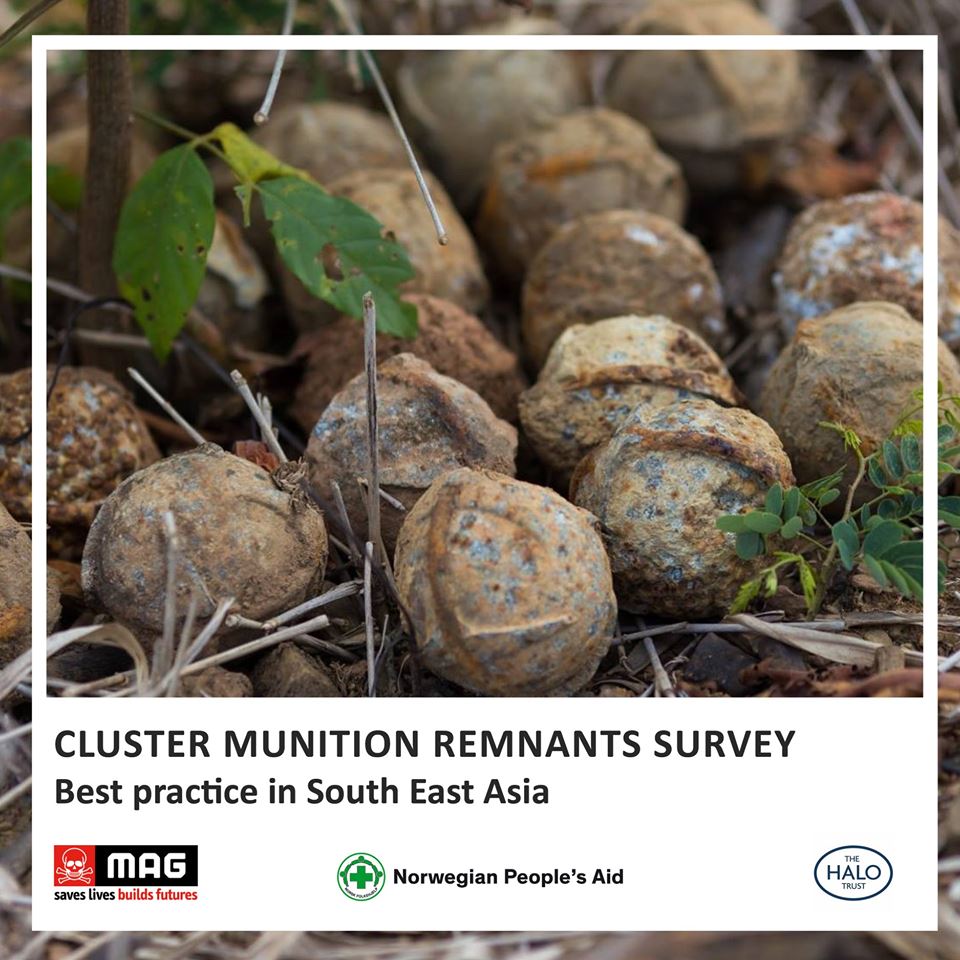Joint document on Best Practices for Cluster Munitions Remnants Survey in South East Asia launched
 |
NPA, MAG and The HALO Trust released a joint document on Best Practice for Cluster Munition Remnants Survey (CMRS) in South East Asia at the Ninth Meeting of States Party to the Convention on Cluster Munitions.
This document outlines the principles, approaches and methodologies that the three organisations consider to be best practice for implementation of CMRS in South East Asia, based on years of experience on implementation in Cambodia, Lao PDR and Vietnam. Thanks to U.S. Department of State for generously supporting this publication, and for their ongoing support for CMRS and CMR clearance in South East Asia.
CMRS methodology is used to identify and define the boundaries of an area confirmed to be contamination by cluster munitions, based on direct evidence of contamination. Effective and efficient CMRS should be used to support planning for and prioritisation of battle area clearance activities.
A shared belief that a well-managed, locally-adapted response should be use to target survey and clearance of CMR has led NPA, MAG and The HALO Trust to work closely on the development of a methodology known as CMRS, first introduced to South East Asia in 2008. Efficient and effective land release is a core global priority for NPA, MAG and HALO, with many resources and expertise made available to continually improve procedures and approaches.
In the spirit of Article 4 of the Convention on Cluster Munitions, NPA, MAG and The HALO Trust adopt the principle of applying all reasonable effort to clear CMR contamination as soon as possible in Cambodia, Lao PDR and Vietnam through the implementation of CMRS. CMRS is a first, critical step in supporting governments to clear CMR as soon as possible, and therefore forms a core component of NPA, MAG and HALO activities in South East Asia.
TS is conducted by using detection tools to identify the presence of CM, and mark this based on a system of 50m x 50m boxes. Each box is given a specific colour code to map the presence of cluster munitions. This code, combined with the mapping of CM found during CMRS, is used to define the boundary of a confirmed hazardous area.
The feedback loop between clearance and CMRS is critical to avoid under or overestimating the size of the CHA, and to verify the accuracy and quality of survey results. It also enables operators to improve their methodology to be able to conduct the survey in the most efficient and effective manner. The close operational partnership between NPA and MAG and Quang Tri province, Vietnam, is an excellent example of this practice.
Cooperation, transparency and accessibility of data are critical to the successful implementation of CMRS in South East Asia. IMSMA is the key tool for reporting, storing and analysing data before, during and after the completion of CMRS.
Recommended
 World
World
India strikes back at terrorists with Operation Sindoor
 World
World
India sending Holy Relics of Lord Buddha to Vietnam a special gesture, has generated tremendous spiritual faith: Kiren Rijiju
 World
World
Why the India-US Sonobuoy Co-Production Agreement Matters
 World
World
Vietnam’s 50-year Reunification Celebration Garners Argentine Press’s Attention
 World
World
"Will continue offering our full support to Indian govt": US FBI Director after Pahalgam attack
 World
World
"Great Leader": JD Vance Lauds PM Modi During His India Visit
 World
World
Trump’s Tariff Pause: A Strategic Move from “The Art of the Deal”?
 World
World
